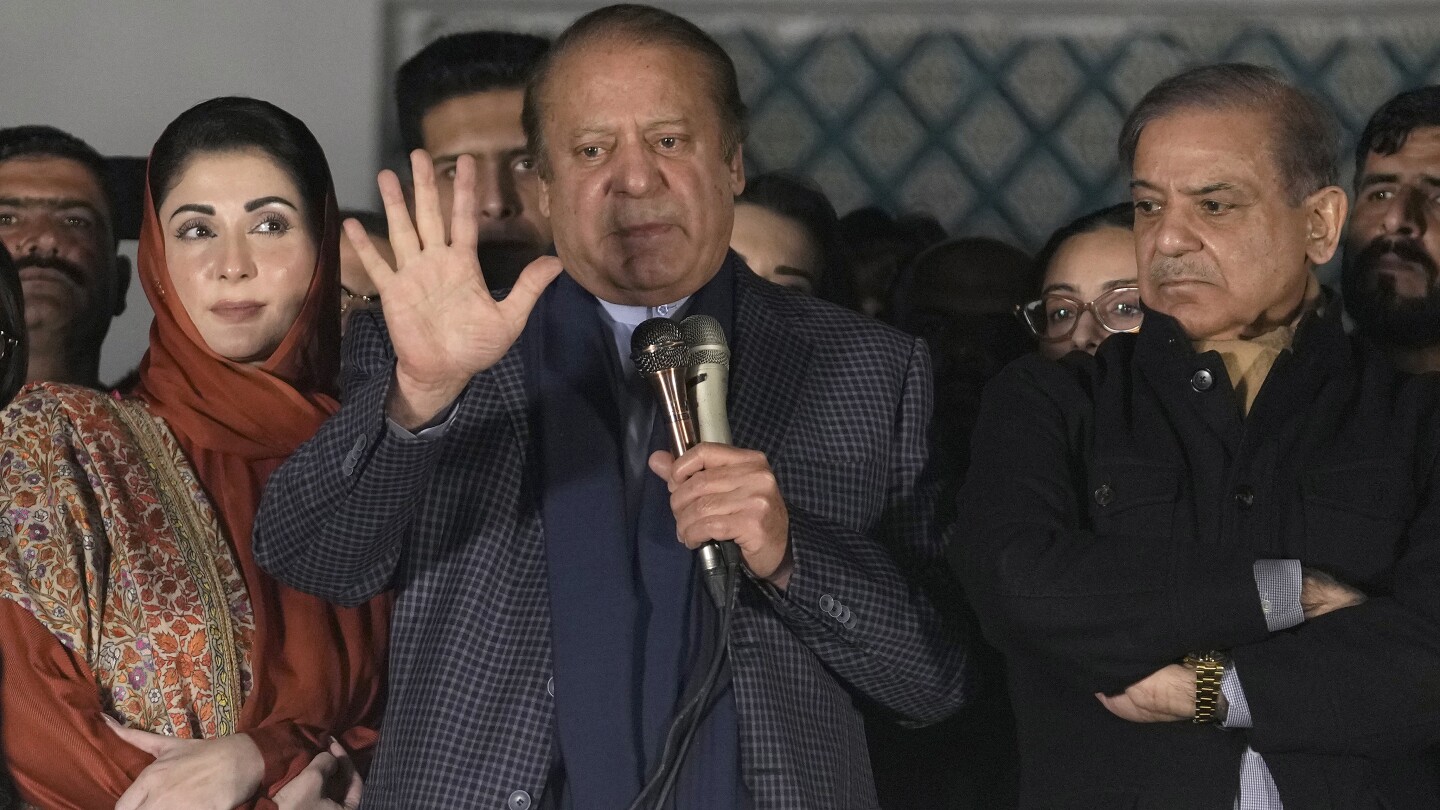LAHORE, Pakistan (AP) — The former prime minister of Pakistan expected his party would claim an easy victory in the country’s parliamentary elections, sending him to the top job for a fourth time. Instead, Nawaz Sharif faces a difficult path to power.
Independent candidates backed by his imprisoned rival, Imran Khan, were leading in the vote count Friday, a surprisingly strong showing given assertions by Khan’s supporters and a national rights body that the balloting was manipulated to favor Sharif.
That scrambled the plans of Sharif — and the security establishment backing him — forcing him to announce plans Friday to try to form a coalition government.
A day earlier, Sharif had gruffly rejected the idea of a coalition, confidently telling reporters after casting his vote that he wanted a single party running Pakistan for a full five-year term.



This is the best summary I could come up with:
A day earlier, Sharif had gruffly rejected the idea of a coalition, confidently telling reporters after casting his vote that he wanted a single party running Pakistan for a full five-year term.
Despite those setbacks — and with most of the 266 National Assembly constituencies announced by the election oversight body — candidates backed by Khan’s Pakistan Tehreek-e-Insaf party, or PTI, had won 99 seats.
However, Pakistan’s deeply divided political climate is unlikely to produce a strong coalition pushing for the betterment of a country grappling with high inflation, year-round energy outages and militant attacks.
Observers had expected Sharif’s Pakistan Muslim League to prevail and put him on track for a fourth term as prime minister due to the disadvantages faced by Khan’s party.
Sharif said he would approach the Pakistan People’s Party of Bilawal Bhutto-Zardari, the son of assassinated former Prime Minister Benazir Bhutto, as a coalition partner.
Sharif’s rivals, including Bhutto-Zardari, criticized him on the campaign trail so the coalition he seeks is apparently aimed at keeping Khan in prison and the PTI out of politics.
The original article contains 873 words, the summary contains 178 words. Saved 80%. I’m a bot and I’m open source!